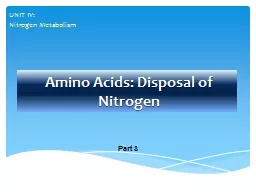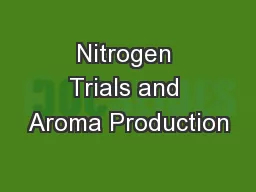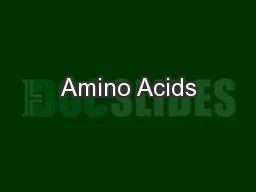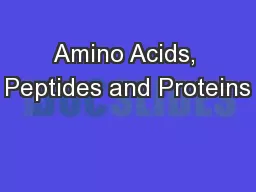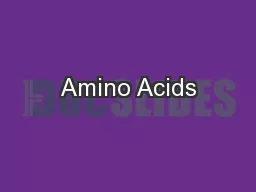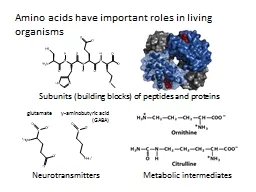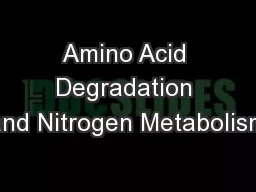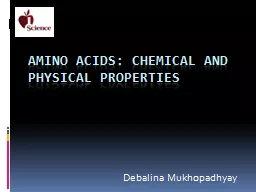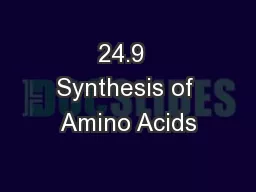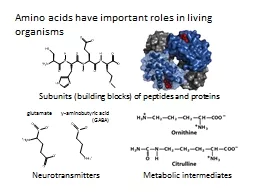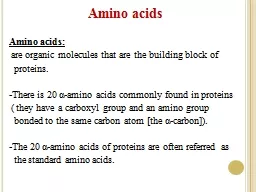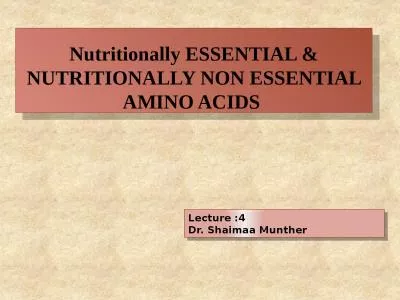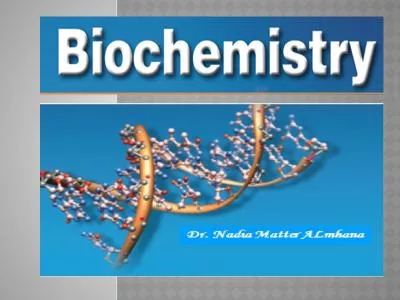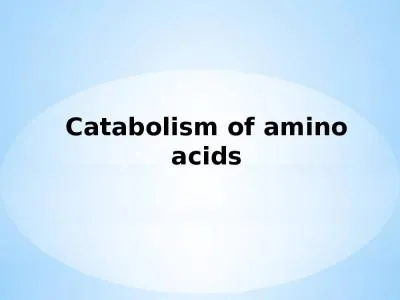PPT-Amino Acids: Disposal of Nitrogen
Author : marina-yarberry | Published Date : 2016-08-07
UNIT IV Nitrogen Metabolism Part 3 C Transport of ammonia to the liver Two mechanisms are available in humans for the transport of ammonia from the peripheral tissues
Presentation Embed Code
Download Presentation
Download Presentation The PPT/PDF document "Amino Acids: Disposal of Nitrogen" is the property of its rightful owner. Permission is granted to download and print the materials on this website for personal, non-commercial use only, and to display it on your personal computer provided you do not modify the materials and that you retain all copyright notices contained in the materials. By downloading content from our website, you accept the terms of this agreement.
Amino Acids: Disposal of Nitrogen: Transcript
Download Rules Of Document
"Amino Acids: Disposal of Nitrogen"The content belongs to its owner. You may download and print it for personal use, without modification, and keep all copyright notices. By downloading, you agree to these terms.
Related Documents

